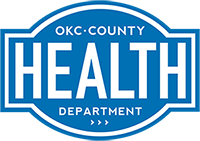Fetal and Infant Mortality Review
ABOUT US
Fetal and Infant Mortality Review (FIMR) is an action-oriented, community-based process that examines the factors and issues that influence fetal and infant mortality in a community. The mission of FIMR is to identify and create systemic change that results in the reduction of the fetal and infant mortality rate. Ultimately, FIMR aims to inspire community changes that result in more women being healthy when they become pregnant, therefore increasing their chance of having a positive pregnancy outcome.


The objectives of FIMR are:
- To examine the significant social, economic, cultural, safety and health system factors that are associated with fetal and infant mortality through review of individual cases;
- To plan a series of interventions and policies that address improvement to service systems and community resources;
- To participate in the implementation of community-based interventions and policies; and
- To assess the progress of the interventions.
WHY DOES CENTRAL OKLAHOMA NEED A FIMR?
Infant mortality rate (IMR) is defined as the number of infant deaths per 1,000 live births. IMR is a key indicator often used to measure the health and well being of a population. Factors such as problems in pregnancy, poverty, an unhealthy physical environment, and barriers to health care and services have a bigger impact on infants than on any other population. The first year of a child’s life is the most vulnerable.
Review of fetal and infant deaths allows the community to respond to the needs identified by the cases reviewed. Reviews provide a voice for local families who have lost their babies. FIMR is a tool that helps the community implement changes designed to address the needs of the society’s youngest population.


HOW DOES FIMR WORK?
The four fundamental steps in the FIMR process include data collection, home interview, case review, and community action.
The FIMR process brings together key members of the community in order to:
- Identify the factors associated with those deaths.
- Determine if they represent system problems that require change (such as barriers to care or gaps in service delivery).
- Develop recommendations for changes and assist in the implementation of change.
WANT TO SIGN UP FOR OUR NEWSLETTER?
Simply click here, enter your email address, and you’re signed up!

